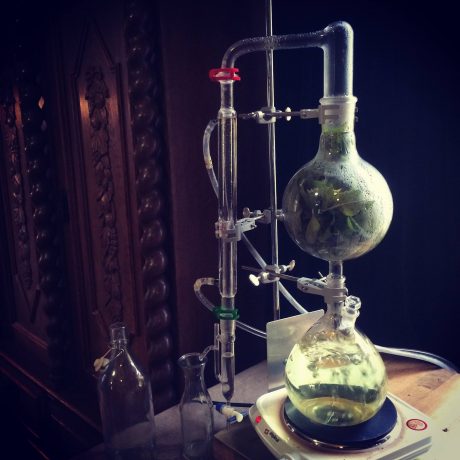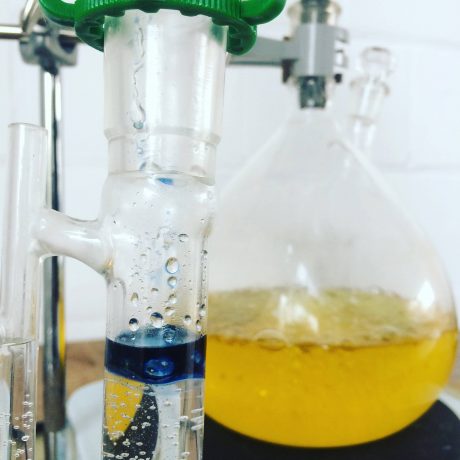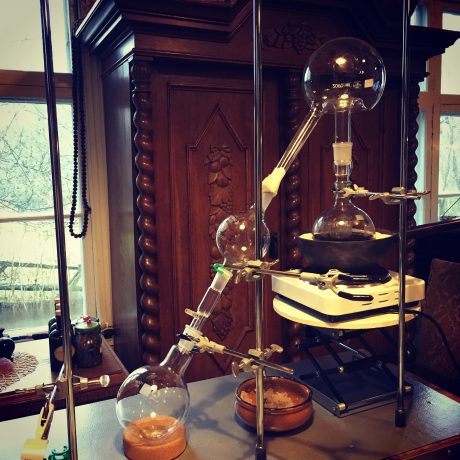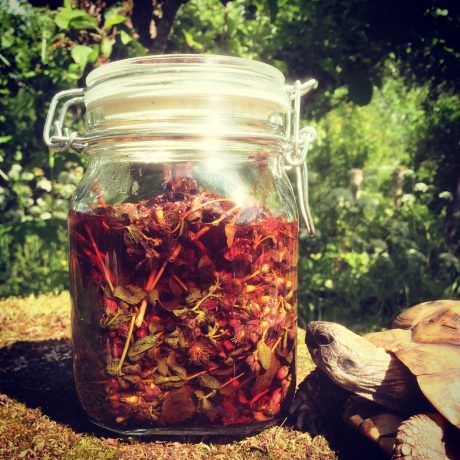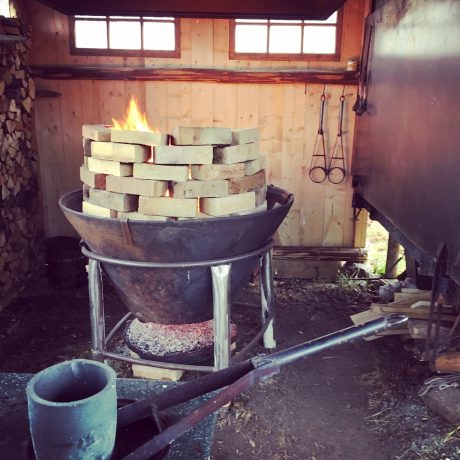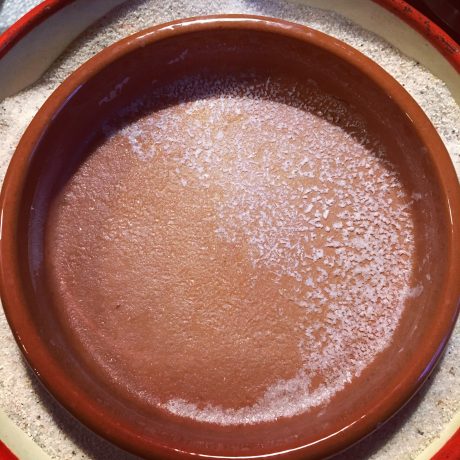![]()
An introduction to the art of spagyria
As above so below
As theory and philosophy are ways of understanding the world, practice is a way of living and experiencing it. The art of spagyrics is the practice of alchemical philosophy, creating herbal extracts that influence the body, spirit and the soul.
The word spagyria was invented by the swiss alchemist Paracelsus in 1400. It is a combination of the two greek words “spao”, to separate, and “ageiro” to reunite.
“There is in each person, in every animal, bird and plant a star which mirrors, matches or is in some sense the same as a star in the heavens.” – Paracelsus
This quote from Paracelsus gives a key to the spagyric art: when the plant is harvested, so is its cosmic counterpart.
For this to be achieved, it is essential that the spagyricist is working in accordance with the cycles of nature and the movements of the heavenly bodies.
In the spagyric process the plant is separated into its unique energetic architecture of the elements, principles and planetary forces.
As above so below
For the plant to evolve into a higher and more refined form, it has to transform through processes of life, death and rebirth. Firstly, the philosophical parts of the plant are separated, worked on and exalted separately.
Finally the parts are reunited to unity in the form of a spagyric tincture, which can also be called an elixir.
![]()
The sulphur principle represents the initial light and the source of life, and it manifests in the essential oil, which is the soul of the plant. Essential oils are unique, no two are alike.
![]()
The mercury principle is translated to the alcohol content, the spiritus, the spirit of the plant. The mercury principle animates all life – and unites all that is alive.
![]()
The salt principle represents the body of the plant – the crystalized mineral salt. The salt is the vehicle in which the soul and spirit travels in.
As above so below
This is a short description of the spagyric process:
The first fundamental step is the separation of the plant into parts. One separates, filters and presses the tincture from the plant mass which has been macerating in alcohol.
After this the plant matter is calcinated – burnt down to a pure white ash, that goes through further purification by leeching in the hydrosol – the distilled floral water that is created during the distillation of essential oil. Through the processes of separation and purification crystals are created, that contain the mineral matrix of the plant.
The second fundamental step is the unification of the parts. Here the crystals, the salt principle of the plant, are reunited with the tincture, the mercury principle, and the essential oil, the sulphur principle.
This is the foundation of the spagyric art. The key is the separation and the reunion of the parts of the plant. Here in lies the fundamental difference between a spagyric tincture and an ordinary tincture – and the reason why small quantities (many times just one drop) of a spagyric tincture are sufficient and have so profound effects.
When we catch a glimpse of the plants from within the alchemical perspective, we simultaneously grasp how the universal forces are at play within ourselves and within the plants. We begin to grasp the big relationships between heaven and earth, the celestial bodies and all life on earth.
As within so without
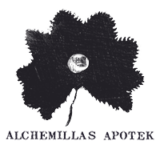
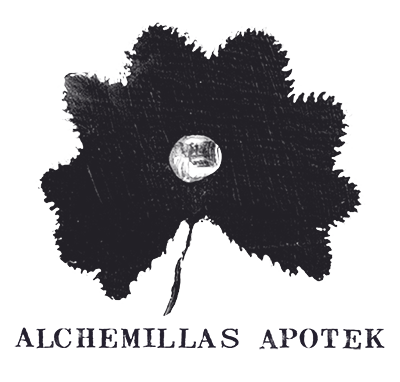

 English
English Svenska
Svenska